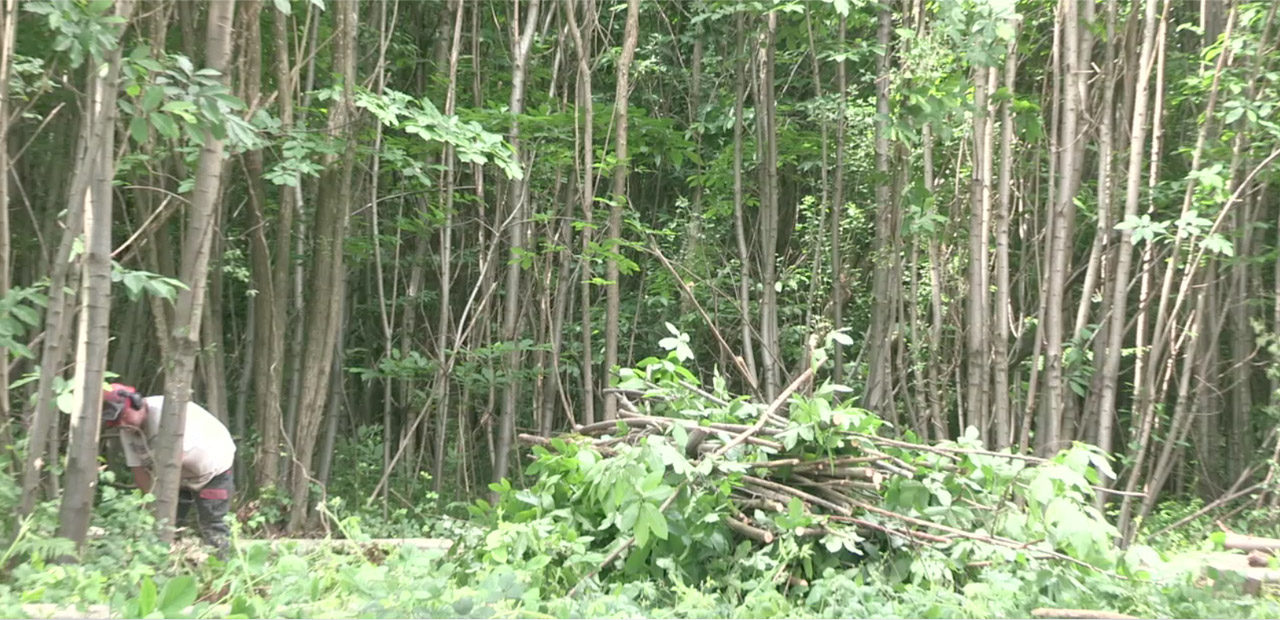History
History | Management | Wildlife and the environment | Processing
Sweet Chestnut’s natural home is in the Mediterranean and the near east, and it is not a native British tree.Tradition has it that it was introduced by the Romans, who valued the nuts as a food for their army, but recent genetic research suggests multiple introductions from many different locations, probably from the Neolithic period onwards.
It is clear from Canterbury Cathedral’s early records that by 1200 there were large areas of chestnut coppice in Kent, and when William Hasted wrote his History of Kent in 1788 he referred to large areas of chestnut woods to the south of Sittingbourne. The Torry Hill chestnut woods form part of this area, and the 1801 Ordnance Survey maps show outlines to the woods very similar to those of today.
The Chestnut Industry
The chestnut industry expanded during the 19th century because of the huge demand for hop poles from the brewing industry, and more recently the Torry Hill woods were much improved in the first half of the 20th century by Douglas Leigh Pemberton. He had the foresight to realise that if the industry was to flourish it needed a regular supply of good quality straight wood. So he set about improving the woodlands by removing most of the “standard” trees, “working over” the woods by removing other species to make stands of pure chestnut, and planting up gaps to create the tightly stocked woods that now produce a high number of very straight poles per acre.
